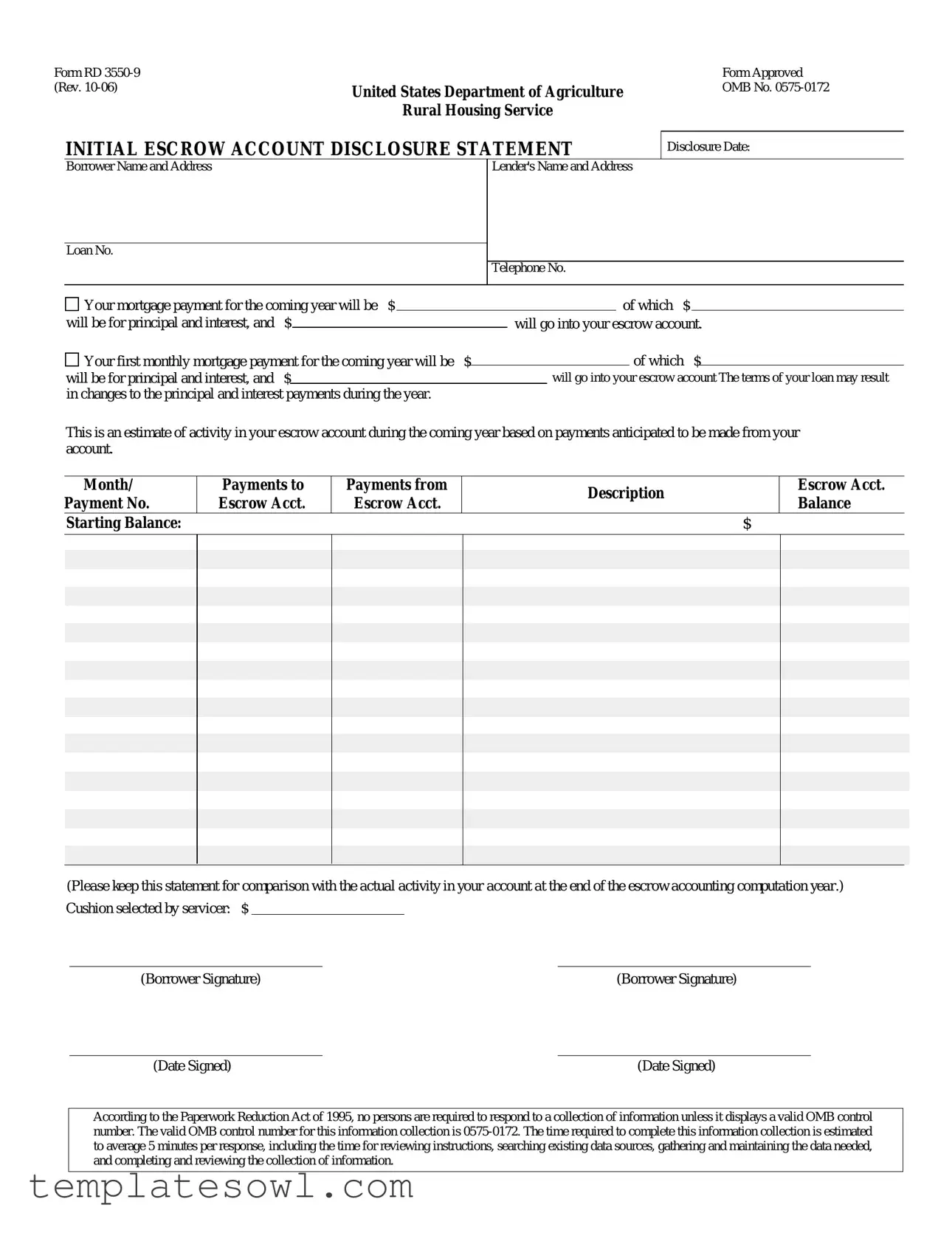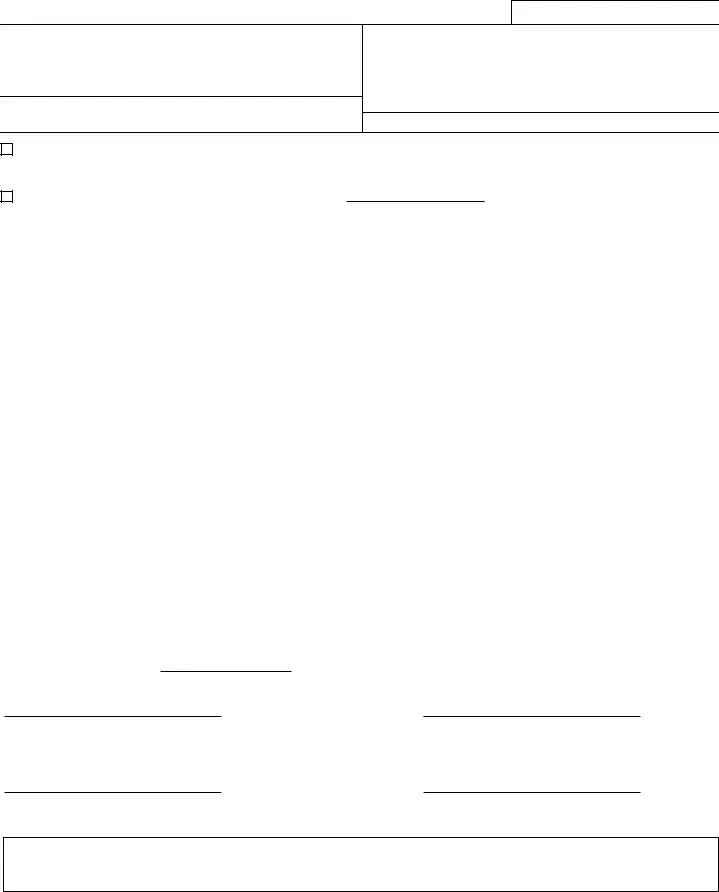What is the Escrow Disclosure form?
The Escrow Disclosure form, specifically Form RD 3550-9, is a financial document provided by the United States Department of Agriculture (USDA) Rural Housing Service. It outlines the expected activity in your escrow account over the upcoming year, including how much of your monthly mortgage payment will be allocated to escrow. This ensures that borrowers understand what part of their payments will go towards property taxes, insurance, and other related expenses.
Why is receiving this form important?
This form is crucial because it helps you plan your finances by providing clarity on your monthly payment breakdown. Knowing how much will be set aside in escrow can aid in budgeting for other costs related to homeownership, allowing for a more informed financial decision-making process.
What does the term "escrow account" mean?
An escrow account is a special account where money is held on behalf of the borrower to cover specific expenses, such as property taxes and homeowners insurance. When these bills come due, the lender uses funds from this account to pay them on your behalf. This can prevent the burden of large lump-sum payments and helps ensure these essential expenses are paid on time.
What details are included in the Escrow Disclosure form?
The form includes your name, the lender's information, the loan number, and a breakdown of your monthly mortgage payment. It details how much of that payment will contribute to your principal and interest and how much will go into your escrow account. Additionally, it provides an estimate of what will be paid from the escrow account throughout the year and the starting balance.
How will my monthly payment change over the year?
Your initial monthly mortgage payment will likely change due to fluctuations in property taxes or insurance premiums. The form indicates that your payments may be adjusted based on the actual amounts due, meaning the lender might require higher payments in the future if costs rise.
What is the "cushion" mentioned in the form?
The cushion is an amount that lenders may keep in the escrow account as a safeguard against potential increases in property taxes or insurance costs. This cushion ensures there are sufficient funds to cover these expenses without the need for immediate additional payments from you, preventing unexpected financial strain.
Should I keep the Escrow Disclosure form?
Yes, it is important to retain this document for future reference. Keeping it will allow you to compare the estimated activity in your escrow account with the actual transactions at the end of the escrow accounting computation year. This can help ensure everything aligns with your expectations and identify any discrepancies.
What happens if there is a shortage in my escrow account?
If there is a shortage in your escrow account, the lender may require you to make up the difference through a one-time payment or by increasing your monthly payments. It is essential to stay informed about your account to avoid unexpected costs later on.
Can I get a refund if there is a surplus in my escrow account?
Yes, if there is a surplus in your escrow account at the end of the year, the lender is typically required to refund any excess amount back to you. This often occurs after the annual escrow analysis, which reviews the account's activity and balances out payments to ensure accuracy.
How long does it take to complete the Escrow Disclosure form?
Completing the Escrow Disclosure form typically takes around five minutes. This includes reviewing the instructions, gathering any necessary data, and finalizing the document. It is designed to be a straightforward process to ensure you receive the essential information effectively.

